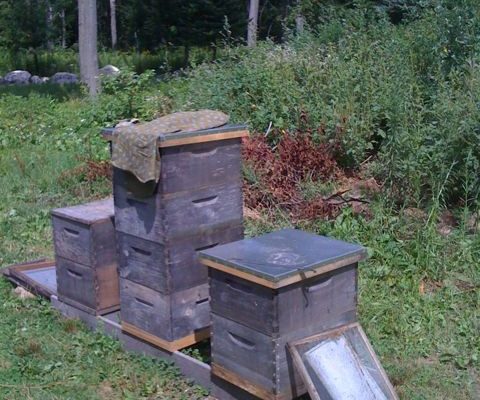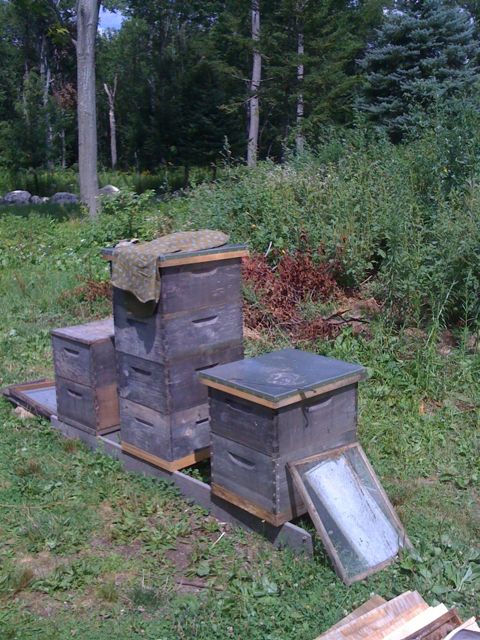I had a happy sighting yesterday. Remember that split I made exactly 24 days ago? No? Well, let me remind you:
I took a frame containing some queen cells I’d found in Tomboys, and I made a split…which means I began a new colony from an old one by placing that queen-cell-containing frame in a box of it’s own. To it’s new box I added a nice frame of honey (in order to provide food until the new colony begins its own foraging), two frames of brood (so there’ll be a force of nurse bees available once our newly hatched queen begins laying her eggs), and all the nurse bees that were on those frames at the time of the split (to care for the brood I’d moved in there as it develops).
But I worried about how few bees there were in the new colony, so a week later I did a swap: During the day when all the foragers were out in the field, I moved the entire Tomboys colony to the place occupied by the new split and the split to Tomboys’ old spot. I hoped that all the foraging bees who thought they were returning to Tomboys would actually return to the new split (with their food stores) and decide to live there. This is one way to build a work force in a weaker hive.
But there’s been little activity over the past week or so in the new split. I thought that perhaps the queen had failed and the whole colony had absconded. I really had little hope for this experiment’s success.
Yesterday, though, I noticed a little activity in front of the hive…it looked to me as if new bees were orienting to the front of the hive. It’s a cool thing to see. So, I went to check it out…sure enough, new bees were hovering around the front of the hive trying to zero in on home. They always do this late afternoon around my hives. At around 4 PM, all the new bees fly all around the face of the hive—they face it—as if to say, “Okay, if I leave this place, this is what I’m gonna look for when I come home. This is home. It looks like this at this time of day. I don’t go to the hive next door. I come here.”
You know when you park your car far away from wherever you’re headed? And you sort of look around to get your bearings? You turn to look at your car; then, you turn all around to see where it is in relation to where you’re going; you say to yourself, “Okay, I parked near this big light post…the light post nearest the entrance to the Great American Ballpark. The one from which you can see the river.” Well, that’s what bees do. They do it before they ever leave their hive, and then there’s no need for them to reorient unless I move them.
I’m so happy to know that new bees have just emerged from the split hive…these new bees have to be those which were only eggs when I moved the brood-containing frames from Tomboys. It’s still too early to expect brood from the new queen (if she’s in there). It’s been 24 days now since I created the split. The new queen should begin laying eggs about 21 days after she emerges—that should be sometime this week. I’m not gonna check for at least another week. Well, I might pop the top and peek inside, but I’m not gonna pull any frames. I’m not gonna upset their delicate balance so early in their game.
I’ve held off giving them a name for fear they wouldn’t make it.



